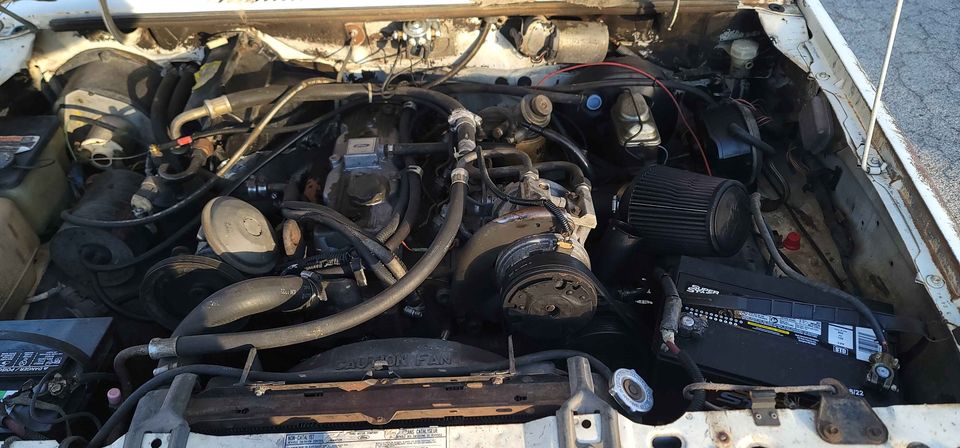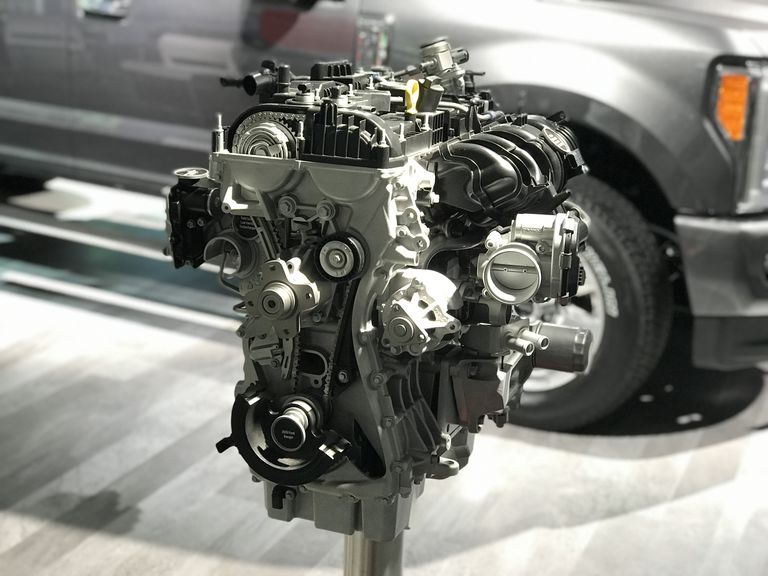Top Benefits of Choosing the 2.2 Ford Ranger Engine for Your Next Pickup
Comprehending the Fundamentals of Cars And Truck Engines: Functions, functions, and types

Overview of Auto Engines
A car engine functions as the heart of a car, transforming fuel right into power to thrust it ahead. This elaborate system comprises different parts that work in unison to make certain optimum performance and effectiveness. The fundamental operation of a car engine includes the inner combustion process, wherein gas and air are combined, fired up, and eliminated to create power.
The engine's style can significantly affect its performance, gas efficiency, and discharges. Secret parts include the cyndrical tube block, pistons, crankshaft, and camshaft, each playing a vital duty in the engine's overall function. The cylinder block houses the cyndrical tubes where burning takes place, while the pistons transform the explosive energy from combustion into direct activity. This activity is then transformed into rotational energy by the crankshaft, allowing the lorry's wheels to transform.
In addition to these elements, engines commonly make use of various systems such as fuel shot, ignition, and cooling down systems to enhance performance and durability. Recognizing the fundamental technicians of car engines is vital for diagnosing issues and performing upkeep, inevitably adding to the automobile's dependability and efficiency in time.

Sorts Of Car Engines
Car engines can be categorized right into several kinds based upon their style, fuel kind, and functional principles. 2.2 ford ranger engine. The most common categories consist of interior combustion engines (ICE), electrical engines, and crossbreed engines
Internal burning engines, which can be more separated into gasoline and diesel motor, run by firing up a fuel-air mix to generate power. Gas engines are generally lighter and smoother, while diesel engines are extra fuel-efficient and deal greater torque.
Electric engines make use of electric power saved in batteries to power an electric motor, giving instantaneous torque and no discharges throughout operation. As modern technology advancements, electric vehicles (EVs) are significantly ending up being preferred for their environmental advantages and lower running prices.
Crossbreed engines integrate aspects of both inner combustion and electrical engines, permitting versatile source of power and enhanced fuel efficiency. They can run in various modes, utilizing either the gasoline engine, the electric motor, or both all at once.
Each kind of engine has unique advantages and downsides, influencing their application in different lorry kinds and market segments, from portable cars to sturdy trucks. Understanding these types is crucial for making notified decisions concerning lorry selection and performance expectations.
Engine Functions Clarified
Recognizing engine functions is vital for understanding just how cars operate effectively. At the core of any type of interior burning engine lies the essential process of transforming gas right into mechanical energy.
The ignition occurs following, igniting the blend and producing a fast growth of gases. This force drives the piston down throughout the power stroke, which eventually converts into the rotational movement of the crankshaft. The exhaust stroke then eliminates the spent gases company website from the chamber, giving way for a brand-new cycle to start.
In addition to these primary functions, engines likewise include systems that handle air conditioning and lubrication, ensuring optimum operational temperature levels and decreasing rubbing between moving parts. This complex interaction of functions makes it possible for the engine to produce the power necessary for vehicle propulsion while preserving effectiveness and reliability. Comprehending visit homepage these features offers beneficial understanding into the intricacies of vehicle design and boosts the ability to detect and address engine-related problems efficiently.
Key Engine Attributes
Engine layout encompasses several crucial functions that significantly affect durability, performance, and efficiency. One of one of the most essential elements is the engine setup, that includes inline, V-type, and level layouts. Each setup influences the engine's power, balance, and dimension outcome, thereby impacting general lorry characteristics.
An additional crucial feature is the engine displacement, describing the overall quantity of all cyndrical tubes. Larger displacements commonly generate more power yet may compromise fuel effectiveness. Engine products additionally play a critical function; high-strength and lightweight products, such as aluminum and magnesium alloys, improve efficiency without adding excessive article weight.
The type of gas shot system employed-- such as direct or multi-port injection-- impacts combustion effectiveness and discharges. Supercharging and turbocharging are features that enhance engine efficiency forcibly added air right into the burning chamber, raising power output without dramatically increasing engine size.
Last but not least, the presence of advanced engine management systems enhances fuel-air combination and ignition timing, adding to smoother procedure and better gas economic situation. Jointly, these features specify an engine's capabilities, establishing the foundation for its efficiency and longevity in a competitive automobile landscape.
Upkeep Tips for Engines
Appropriate engine maintenance is important for making sure optimum performance and durability, as ignoring regular treatment can cause significant issues down the line. To preserve your engine successfully, begin with routine oil modifications, typically every 3,000 to 7,500 miles, depending upon the kind of oil made use of. Fresh oil lubricates engine elements, decreasing rubbing and wear.
Additionally, keeping an eye on coolant levels is essential to prevent overheating. Make certain that the coolant is topped up and is in excellent problem to maintain effective temperature guideline. Regularly replace and examine air and fuel filters, as clogged up filters can prevent air flow and gas distribution, jeopardizing engine performance.
Moreover, focus on ignition system and ignition systems. Used or malfunctioning spark plugs can result in misfiring and minimized performance. Examining the battery terminals and connections for corrosion is likewise necessary, as a weak battery can influence engine beginning.

Verdict
In recap, a thorough understanding of cars and truck engines includes different kinds, features, and vital attributes that considerably affect automobile efficiency. Inner burning engines, together with hybrid and electrical options, demonstrate varied devices for power conversion. 2.2 ford ranger engine. Identifying the crucial features, such as consumption and exhaust cycles, together with vital engine functions like setup and fuel shot systems, gears up vehicle owners with the knowledge essential for reliable upkeep and operation, ultimately improving car longevity and efficiency
A vehicle engine serves as the heart of a lorry, transforming fuel right into mechanical power to push it forward. The fundamental procedure of an auto engine entails the interior burning procedure, wherein gas and air are mixed, stired up, and eliminated to develop power.
Consistently check and replace air and gas filters, as stopped up filters can hinder air movement and fuel delivery, jeopardizing engine efficiency. - 2.2 ford ranger engine
In recap, an extensive understanding of car engines incorporates various kinds, functions, and vital functions that significantly affect vehicle efficiency. Recognizing the necessary features, such as intake and exhaust cycles, together with critical engine functions like configuration and fuel shot systems, gears up auto owners with the understanding required for reliable maintenance and procedure, inevitably enhancing automobile longevity and effectiveness.